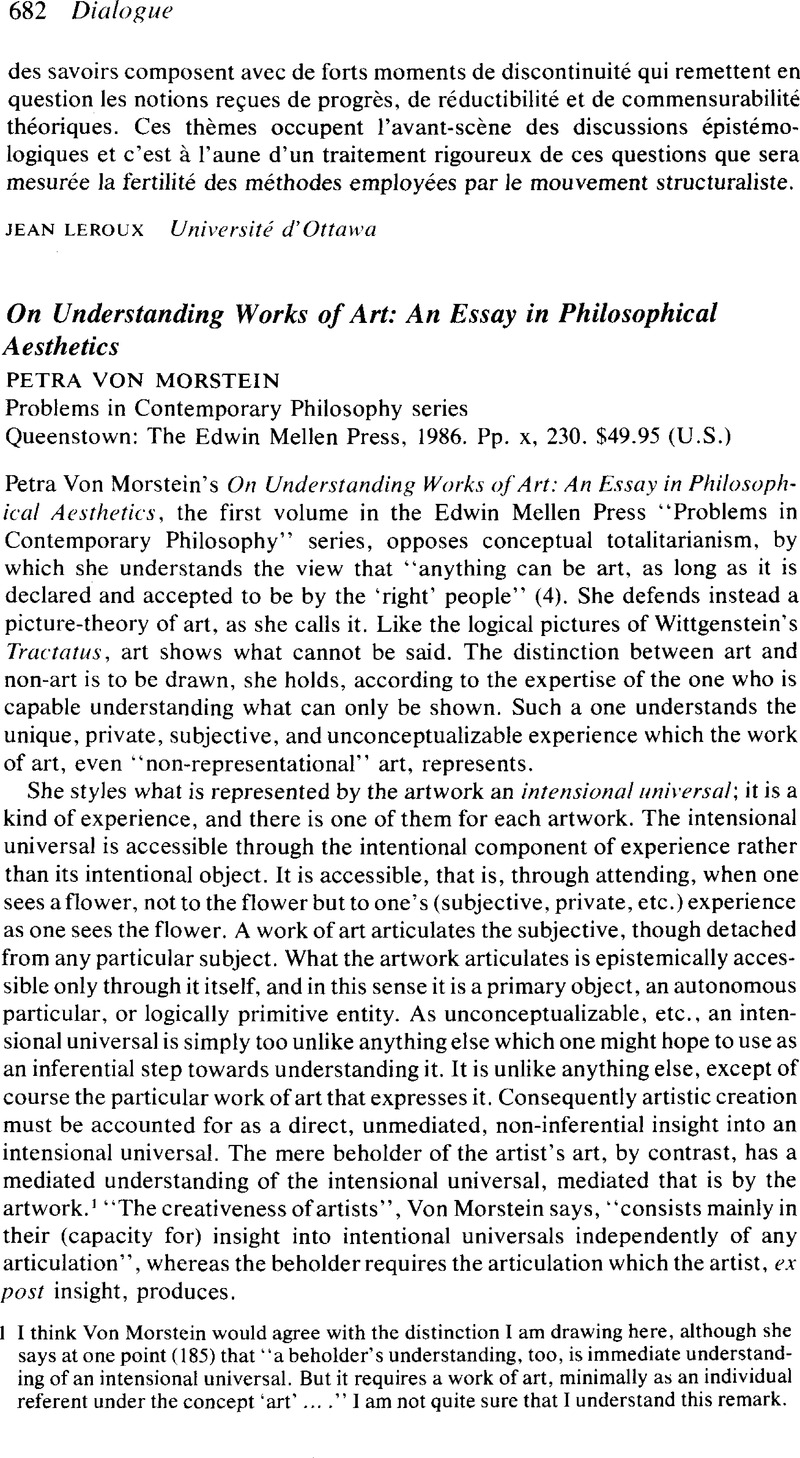No CrossRef data available.
Published online by Cambridge University Press: 13 April 2010

1 I think Von Morstein would agree with the distinction I am drawing here, although she says at one point (185) that “a beholder's understanding, too, is immediate understanding of an intensional universal. But it requires a work of art, minimally as an individual referent under the concept ‘art’ ….” I am not quite sure that I understand this remark.
2 Another is her following up an adequately clear statement of her position by adding, “Let us elucidate this by analogy with the Husserlean noetic/noematic structure,” an analogy which could be elucidating only for Husserl scholars, a much smaller class I presume than the intended readers of her book.
3 Ontological transmitters “transmit original meaning as bearers of original meaning” (207). A merely epistemological transmitter such as a postcard reproduction of a painting, on the other hand, “has properties adequate to generate understanding of the work in the beholder”, but it cannot be the significant form of the original, although it has that form: “If a post-card reproduction could be the same significant form as the original the absurd possibility would obtain that Monet [sic] might have painted Dejeuner a I'Herbe [sic] on a post-card; from this it would follow, equally absurdly, that for (at least some) paintings the size of the original is not a feature constitutive of the original's significant form” (209).